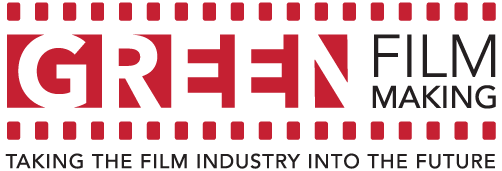
Sustainable additions to Covid-19 toolkit
Green Film Making developed special extra tips in addition to the COVID-19 Protocol Audio-visual Sector. These new health guidelines for on set are often close to sustainable solutions. And now that a lot of energy is already being put into new regulations related to corona, it can also be used to take that extra step towards a sustainable set.
Production:
- Provide sufficient preparation time for the different departments and schedule a collective video meeting for coordination and testing. Give location scouts and location managers extra time to visualize locations and to provide digital plans.
- Provide maps in advance, so that everyone knows on the shooting day where storage spaces are and how the supply and removal of props and materials should proceed. This can also provide insight into how to combine transport and save money and emissions. Also make clear in the daily planning how the construction and switches for each scene will take place and where the crew is located at each point.
Hygiene:
- Washing hands and placing disinfectant can be included as standard with all functions. This means that both in the office and on the set, there must always be a possibility to wash / or disinfect your hands upon arrival and departure. Place a box or bag at the entrances to the set where paper can be thrown away, so that you can collect it separately.
- In catering in particular, it now seems to be a requirement that there is running water and that it is possible to wash hands, also at the toilets on the set. Consider to use the Setsink if there is no running water nearby. For toilets you can also consider vacuum toilets that are and remain cleaner and also have the possibility to wash hands (Locatie werk).
Transport:
The rule now is to all come to set separately. Or if there is no other way, use plastic partitions. Fine, but don’t forget that cycling, or electric scooters, (which can now also be rented / leased) also remain an option for everyone coming to set without equipment. Or travel with a face mask with public transport or take electric taxis, if the actors are to be brought by taxi.
Location:
- Make sure that waste can be disposed of separately and that there are enough crates to separate used items from unused items. Provide more waste bins in different places.
- Make it clear after a shooting day who is responsible for cleaning the materials that have been used by everyone.
- Right now everyone tends to wrap everything in plastic to guarantee cleanliness. Sometimes this can be replaced by paper, cloth or other means that can be reused. In any case, a good opportunity to clearly separate waste. And also to dispose of this separately.
Direction:
- Use zoom or other software programs to organize digital rehearsals with the actors.
Costume Department:
- Use bags made of fabric, that can be washed afterwards. Or plastic covers that can be cleaned and reused.
Camera:
- Test beforehand which effect is achieved with which light or lens. Schedule test days with the rental companies.
- If possible, use visual effects to get clear what really needs to be shot on set and what can possibly be done before or afterwards in postproduction. (test-test-test). Make sure that the moving storyboard can be viewed digitally by the different departments beforehand, so that it makes communication on the set itself more efficient and that most questions can be asked in advance.
- For large sets, build a small animation (in Sketch, Frame or other software packages) with the Art Department to ensure that no more is being built than what the angle of the camera needs. This means you only build what is really necessary and the set is ready quicker.
- Research with post-production if shooting against a green screen or other digital effects is an option to create more freedom of movement for the actors (and you possibly have to build less or smaller sets).
Light:
- Use available light or LED as much as possible. This may mean you need one person less on set, as it is easier to set up and is less heavy. Moreover, it saves energy.
Catering:
- Packing cutlery separately does not mean that it has to be done with plastic. Cutlery can be left in containers of water after meals and washed for reuse the next day and rolled in a napkin.
- If plastic is nevertheless used, preference is given to recycled plastic or paper / cardboard.
- Name tags can also be used on cups, if you wash dishes on set.
- Provide sufficient taps to refill water bottles.
- It may also be an option to have lunch provided by a nearby restaurant that provides separate portions for the crew. That saves logistics on set. In addition, it can be agreed that they will collect waste and crockery in crates afterwards, which they can use again the next day.
Production design:
- Show what the cameras can shoot with storyboard animations. Also to calculate what the room to move is inside the decor.
Postproduction:
- As the head of post-production, make sure that you are involved in the preparations as early as possible. This way your knowledge and the digital possibilities can be shared with camera, grip, direction and the art department sooner.
